Himachal Pradesh is a northern Indian state in the Himalayas. It's home to scenic mountain towns and resorts such as Dalhousie. Host to the Dalai Lama, Himachal Pradesh has a strong Tibetan presence. This is reflected in its Buddhist temples and monasteries, as well as its vibrant Tibetan New Year celebrations. The region is also well known for its trekking, climbing and skiing areas.
Best Places To Visit in Himachal Pradesh
Manali - High Altitude Himalayan Resort Town
Manali is a high-altitude Himalayan resort town in India’s northern Himachal Pradesh state. It has a reputation as a backpacking center and honeymoon destination. Set on the Beas River, it’s a gateway for skiing in the Solang Valley and trekking in Parvati Valley. It's also a jumping-off point for paragliding, rafting and mountaineering in the Pir Panjal mountains, home to 4,000m-high Rohtang Pass.

The Mall Road and its bazaar are the town’s focal point, while the Old Manali neighborhood is home to traditional stone buildings, apple orchards and the Hindu Manu Temple. Across the Manaslu River on a forested hilltop is wood-carved Hadimba Devi Temple, built in 1553 and dedicated to a Hindu goddess. The Museum of Himachal Culture and Folk Art preserves local crafts and heritage. In the Tibetan quarter, the Buddhist monastery Gadhan Thekchhokling is recognizable by its yellow, pagoda-style roof. East of the Beas River is Vashisht, a village known for its hot springs.
Shimla - Town in Himalayan foothills
Shimla is the capital of the northern Indian state of Himachal Pradesh, in the Himalayan foothills. Once the summer capital of British India, it remains the terminus of the narrow-gauge Kalka-Shimla Railway, completed in 1903. It’s also known for the handicraft shops that line The Mall, a pedestrian avenue, as well as the Lakkar Bazaar, a market specializing in wooden toys and crafts.

Hindu shrines in the area include Kali Bari Temple near The Mall and Jakhu Temple on Jakhu Hill, dedicated to the monkey god Hanuman. The hill is Shimla’s highest point, also known for its sunrise views across the Himalayas. The town’s British colonial architectural heritage includes Gothic Victorian structures such as Christ Church and the Gaiety Theatre. There’s also a mock-Tudor half-timbered library, and the Scottish baronial mansion formerly known as Viceregal Lodge, built in 1888 and now home to an academic foundation. Outside of Shimla are picturesque hill resorts such as Naldehra, as well as Chadwick Falls.
Dharamshala - Home to Dalai Lama and the Tibetan government-in-exile
Dharamshala is a city in the Indian state of Himachal Pradesh. Surrounded by cedar forests on the edge of the Himalayas, this hillside city is home to the Dalai Lama and the Tibetan government-in-exile. The Thekchen Chöling Temple Complex is a spiritual center for Tibetan Buddhism, while the Library of Tibetan Works and Archives houses thousands of precious manuscripts.

Lower Dharamshala comprises a largely Indian community, while a Tibetan enclave lives uphill in the suburb of McLeod Ganj. Near the Dalai Lama's main temple, Tsuglagkhang, is a Buddhist monastery known as Namgyal Gompa. The Tibet Museum provides a historical overview of Tibet's occupation. Cultural establishments include the Norbulingka Institute, a haven for traditional Tibetan arts and crafts, and the Tibetan Institute for Performing Arts, which preserves Tibetan opera, music and dance. The city also offers trekking trails leading across the mountains to Triund, the upper Ravi Valley and beyond.
Dalhousie - High-Altitude Town in Dhauladhar Mountain
Dalhousie is a high-altitude town spread across 5 hills near the Dhauladhar mountain range in the north Indian state of Himachal Pradesh. It's home to colonial-era buildings, including St. Francis and St. John’s churches, which date back to the rule of the British Raj in the 1800s. A trek up Dainkund Peak leads to Pholani Devi Temple. To the north, Subhash Baoli is a peaceful area with pine trees and panoramic views.
Kufri - Hill Station in Himachal Pradesh
Kufri is a small hill station in Shimla district of Himachal Pradesh state in India. It is located 20 km from the state capital Shimla on the National Highway No.22. The name Kufri is derived from the word kufr meaning "lake" in the local language. The highest point in the surrounding region, Kufri has a Himalayan wildlife zoo which hosts rare antelopes, felines and birds including the Himalayan monal, the state bird of Himachal Pradesh until 2007. During winter a meandering path through the potato plantations turns into a popular ski track.
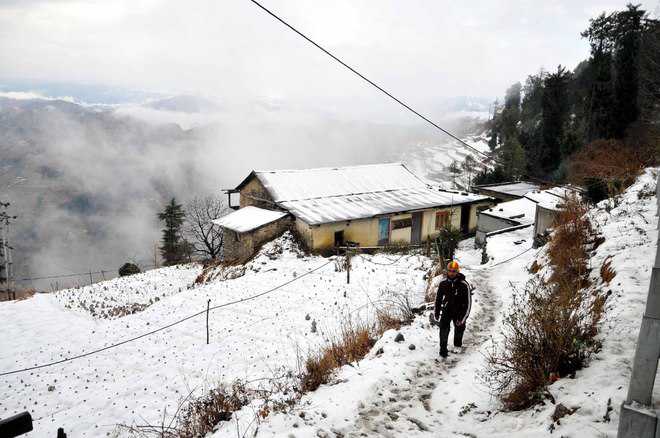
Kullu - Capital Town in Kullu District
Kullu or Kulu is the capital town of the Kullu district in the Indian state of Himachal Pradesh. It is located on the banks of the Beas River in the Kullu Valley about 10 kilometers north of the airport at Bhuntar. Kullu Valley is a broad open valley formed by the Beas River between Manali and Largi. This valley is known for its temples and its hills covered with pine and deodar forest and sprawling apple orchards. The course of the Beas river presents a succession of magnificent, clad with forests of deodar, towering above trees of pine on the lower rocky ridges. Kullu valley is sandwiched between the Pir Panjal, Lower Himalayan and Great Himalayan Ranges.
Khajjiar - Hill Station Known for Khajji Nag
Khajjiar is a hill station in the north Indian state of Himachal Pradesh. Dating from the 12th century, Khajji Nag Temple is dedicated to a serpent god. Nearby, the high-altitude Khajjiar Lake is surrounded by cedar forest. West, Kalatop Wildlife Sanctuary is home to animals including deer and bears. Farther west, Dalhousie is a hill station with mountain views, dotted with temples and 19th-century British churches.

Kasol - Hamlet in the District Kullu
Kasol is a hamlet in the district Kullu, Himachal Pradesh, northern India. It is situated in Parvati Valley, on the banks of the Parvati River, on the way between Bhuntar and Manikaran. It is located 30 km from Bhuntar and 3.5 km from Manikaran. Kasol is the Himalayan hotspot for backpackers. and acts as a base for nearby treks to Malana and Kheerganga. It is called Mini Israel of India due to a high percentage of Israeli tourists here.
Kasauli - Home to Gabled Colonial-Era Houses
Kasauli is a small hill town in the north Indian state of Himachal Pradesh. It’s home to gabled colonial-era houses, orchards and green-roofed Christ Church, dating from the mid-19th century. At the southern edge of town, Monkey Point overlooks forests of horse chestnut and Himalayan oak. A small temple also sits atop the hill. Nearby, the Gilbert Nature Trail winds through lush green countryside rich in birdlife.

Chail - Abode for salubrious beauty and virgin forests
Chail is a hill station in Himachal Pradesh, India. It is 44 kilometers from Shimla and 45 kilometers from Solan. It is known for its salubrious beauty and virgin forests. The Chail Palace is well known for its architecture: the palace was built as a summer retreat by the Maharaja of Patiala during the British Raj, on the land allotted to him by the British for former's assistance in the Anglo-Nepalese War. The cricket ground and a polo ground which is there at an altitude of 2,444 m were owned by the erstwhile royal family of Patiala. It is the world's highest cricket ground. Chail is also frequented by hikers as it offers wonderful views of the lower Himalayas. It has good trekking points from Junga, Kufri and Ashwani Khad at Solan. Many Eco camps are held here. There are many camping sites for campers and hikers, so camping in Chail is most sought after activity for enthusiasts.
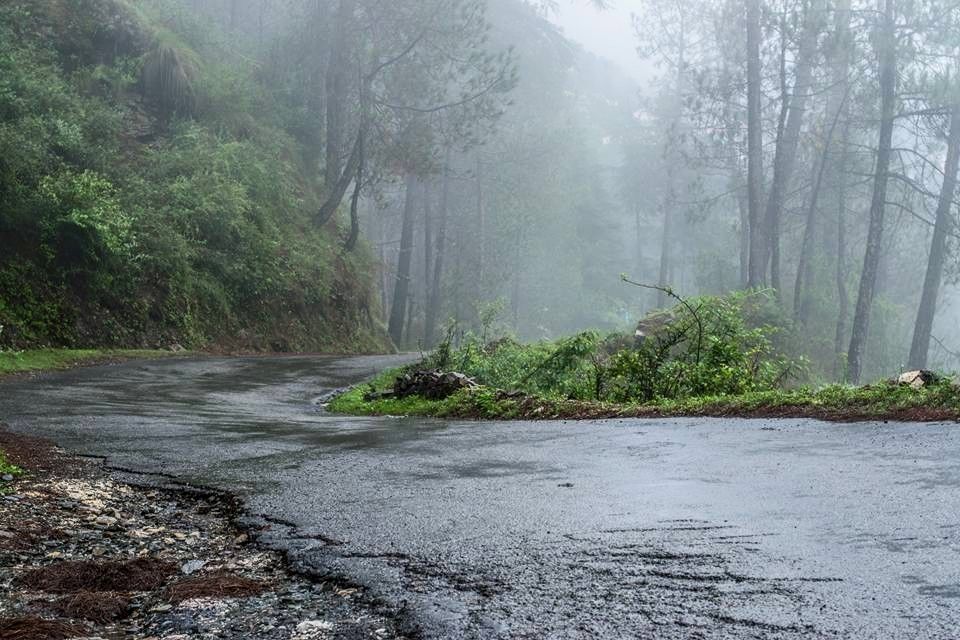
Manikaran - Hot Springs and Pilgrim centers
Manikaran is located in the Parvati Valley on river Parvati, northeast of Bhuntar in the Kullu District of Himachal Pradesh. It is at an altitude of 1760 m and is located 4 km ahead of Kasol and about 35 km from Kullu. This small town attracts tourists visiting Manali and Kullu to its hot springs and pilgrim centers. An experimental geothermal energy plant has also been set up here.

The Great Himalayan National Park
Sprawling national park with diverse plant & animal species in a scenic, high-altitude setting.
Kaza - Town in Spiti Valley
The town of Kaza or Kaze is the subdivisional headquarters of the remote Spiti Valley in the western Himalayas in the Lahaul and Spiti district of the northern Indian state of Himachal Pradesh. Spiti is a high altitude or cold desert having close similarities to the neighboring Tibet and Ladakh regions in terms of terrain, climate and the Buddhist culture. Kaza, situated along the Spiti River at an elevation of 3,650 metres above mean sea level, is the largest township and commercial center of the Spiti valley.
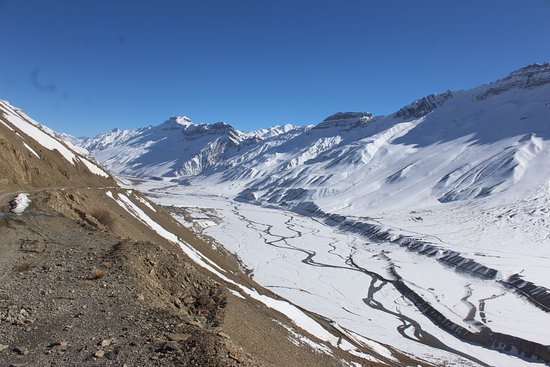
Narkand - Skiing Resort in Winter
Narkanda is a town and a nagar panchayat in Shimla district in the Indian state of Himachal Pradesh. It is at an altitude of 2708 meters on the Hindustan-Tibet Road in Himachal Pradesh, India within a fir forest. It is about 65 km away from Shimla and surrounded by the Himalayan Range. It is a skiing resort in winter. It connects Shimla with Rampur and a detour also goes to Thanedhar, the prime apple belt of Himachal Pradesh where Satyananda Stokes started the apple culture.
Chamba - Capital of Maru Dynasty
Chamba is a town in the Chamba district in the Indian state of Himachal Pradesh. According to the 2001 Indian census, the town is situated on the banks of the Ravi River, at its confluence with the Sal River.
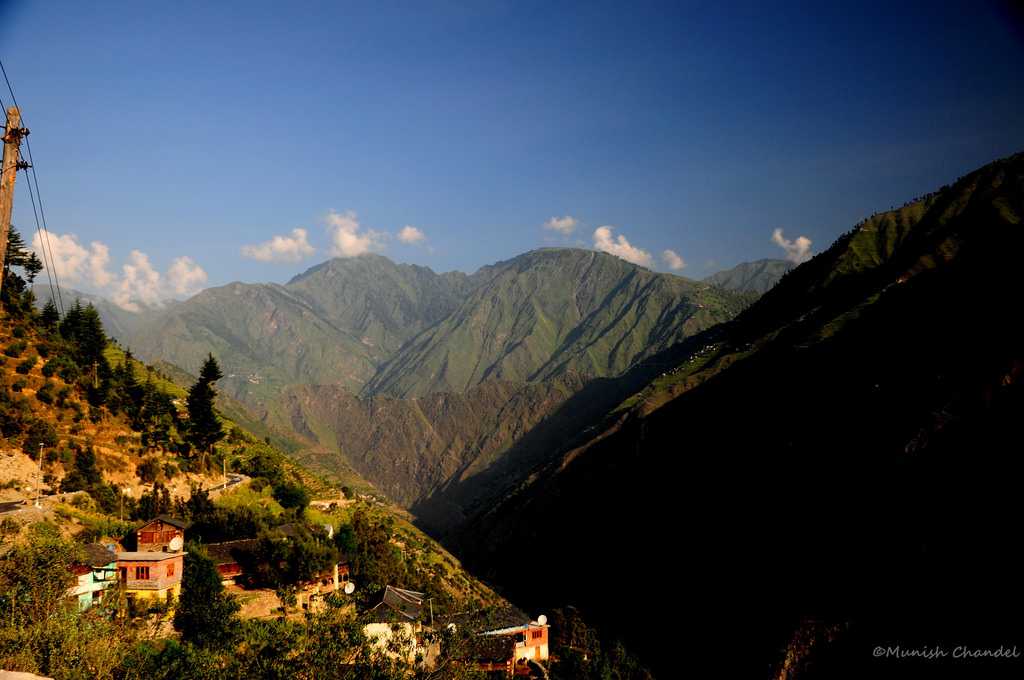
Chambial were the Rulers of Chamba State Chambials use suffix Varmans. Though historical records date the history of the Chamba region to the Kolian tribes in the 2nd century BC, the area was formally ruled by the Maru dynasty, starting with the Raju Maru from around 500 AD, ruling from the ancient capital of Bharmour, which is located 65 kilometres from the town of Chamba. In 920, Raja Sahil Varman shifted the capital of the kingdom to Chamba, following the specific request of his daughter Champavati. From the time of Raju Maru, 67 Rajas of this dynasty ruled over Chamba until it finally merged with the Indian Union in April 1948, although Chamba was under British suzerainty from 1846 to this time. The town has numerous temples and palaces, and hosts two popular jatras, the "Suhi Mata Mela" and the "Minjar Mela", which last for several days of music and dancing.
Bir - Village Near Joginder Nagar Valley
Bir is a village located in the west of Joginder Nagar Valley in the state of Himachal Pradesh in northern India. Bir is a noted centre for ecotourism, spiritual studies, and meditation. Bir is also home to a Tibetan refugee settlement with several Buddhist monasteries and a large stupa.
Sangla - Town in Baspa Valley
Sangla is a town in the Baspa Valley, also referred to as the Sangla valley, in the Kinnaur District of Himachal Pradesh, India, close to the Tibetan border.
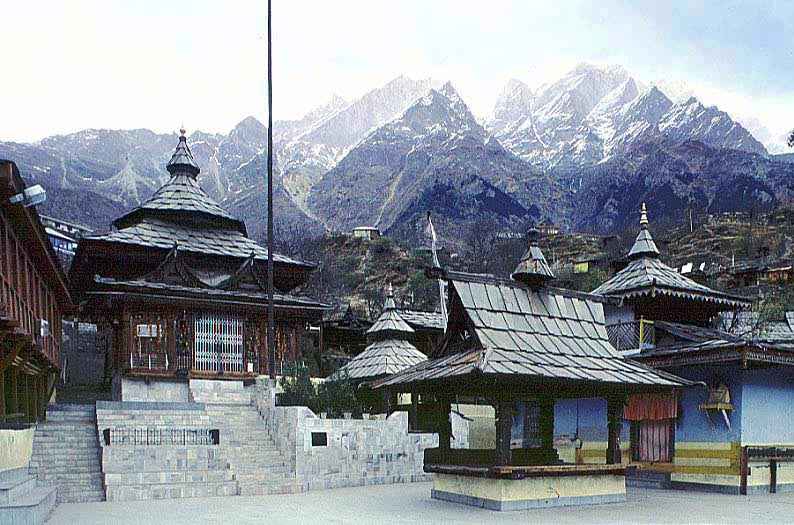
Tabo - Abode to Holiest Tabo Monastery
Tabo is a small town in the Lahaul and Spiti district on the banks of the Spiti River in Himachal Pradesh, India. The town lies on the road between Rekong Peo and Kaza, the sub-divisional headquarters of Spiti. The town surrounds a Buddhist monastery which, according to legend, is said to be over a thousand years old. The Dalai Lama has expressed his desire to retire to Tabo, since he maintains that the Tabo Monastery is one of the holiest. In 1996, the Dalai Lama conducted the Kalachakra initiation ceremony in Tabo, which coincided with the millennium anniversary celebrations of the Tabo monastery. The ceremony was attended by thousands of Buddhists from across the world. Tabo Monastery's spiritual head is Tsenshap Serkong Rinpoche.
Kalpa - Town in Sutlej River Valley
Kalpa is a small town in the Sutlej river valley, above Reckong Peo in the Kinnaur district of Himachal Pradesh, Northern India, in the Indian Himalaya. Inhabited by Kinnauri people and known for its apple orchards. Apples are a major cash-crop for the region. The local inhabitants follow a syncretism of Hinduism and Buddhism, and many temples in Kalpa are dedicated to both Hindu and Buddhist gods and goddesses. The average literacy rate of Kalpa is around 83.75%. India's first-ever voter Shyam Saran Negi also belongs to Kalpa.
Naggar - Historical Capital of Kullu Kingdom
Naggar is situated on the left bank of river Beas at an altitude of 1,800 meters and Naggar is an ancient town in Kullu district of Himachal Pradesh, India. It was once capital of the Kullu kingdom.
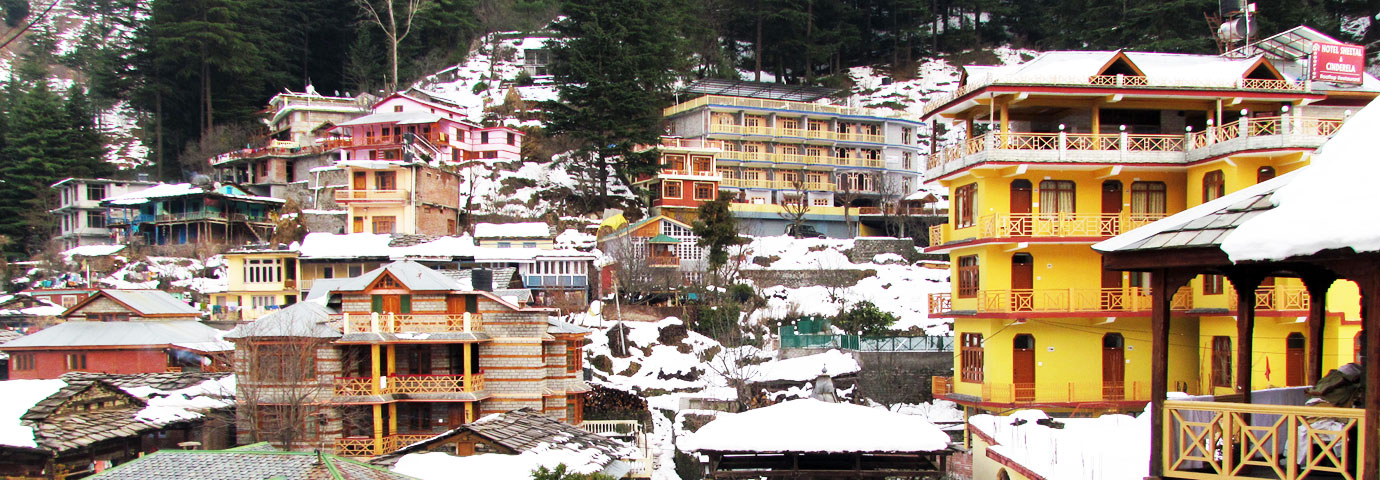
Palampur - Beautiful Tea Gardens
Palampur is a hill station in India’s northern state of Himachal Pradesh. It’s known for its tea gardens like the Palampur Cooperative Tea Factory, which also processes the leaves. A waterfall drops into a stream at Bundla Chasm. Saurabh Van Vihar nature park has picnic spots, birdlife and views of the snow-capped Dhauladhar range. A forested trail leads northeast to hilltop Birni Devi Temple, with mountain views.
Chitkul - Where Indian Roads End
Chitkul is a village in Kinnaur district of Himachal Pradesh. It is the last inhabited village near the Indo-China border. The Indian road ends here. During winters, the place mostly remains covered with the snow and the inhabitants move to lower regions of Himachal. According to a recent study by Centre of Atmospheric Sciences at IIT Delhi, Chitkul has the cleanest air in India.
Malana - Village in Malala Nala
Malana is an ancient Indian village in the state of Himachal Pradesh. This solitary village in the Malana Nala, a side valley of the Parvati Valley to the north-east of Kullu Valley, is isolated from the rest of the world. The peaks of Chanderkhani and Deo Tibba shadow the village. It is situated on a remote plateau by the side of the torrential Malana river, at a height of 2,652 metres above sea level. Malana has its own lifestyle and social structure and people are strict in following their customs.
Malana has been the subject of various documentaries, including Malana: Globalization of a Himalayan Village, and Malana, A Lost Identity. The existing speakers of the autochthonous language Kanashi, the traditional language of the inhabitants of Malana, number approximately 1700. According to the 1961 census, the language speakers were then 563, but today the population of Malana is at least three times as large as 40 years ago. Most common route towards the village is by taxi or bus from Jhari. One stop prior to Malana. Roads till Malana Village trekking gate are developed.
Mandi - Kashi of Himalayas
Mandi, formerly known as Mandav Nagar, also known as Sahor, is a major town and a municipal council in Mandi District in the Indian state of Himachal Pradesh. It is situated 145 kilometres north of state capital, Shimla in the north-west Himalayas at an average altitude of 800 metres and experiences pleasant summers and cold winters.
In the 2011 Indian census, Mandi city had a population of 26,422. Mandi district is currently the 2nd largest economy in the state next to Kangra. Mandi, in the state is having second highest sex ratio of 1013 females per thousand males. It serves as the headquarters of Mandi District and Zonal Headquarters of central zone including Districts namely Kullu, Bilaspur, and Hamirpur. As a tourist place, Mandi is often referred to as "Varanasi of Hills" or "Choti Kashi" or "Kashi of Himachal".
Kangra - Home to Himalayan Pyramids
Kangra is a city and a municipal council in Kangra district in the Indian state of Himachal Pradesh. Historically it was known as Nagarkot. It is the home to the Masrur Temples, also known as the Himalayan Pyramids. It has the highest number of villages among all the other districts of the state.
Kalka - City Dedicated to Goddess Kali
Kalka is a town in the Panchkula district of Haryana, India. The name of this town is derived from the goddess Kali. The town is situated in the foothills of the Himalayas and is a gateway to the neighbouring state of Himachal Pradesh. It is on the National Highway 22 between Chandigarh and Shimla, and it is the terminus of the Kalka-Shimla Railway. To the south of Kalka is Pinjore, and the industrial village of Parwanoo is to the north on the NH 22. Industrial development has led to a continuous urban belt from Pinjore to Parwanoo, but Kalka remains largely unaffected by these developments. Nearby is Chandimandir Cantonment where the Western Command of the Indian army is based. In 2013 it has come under the jurisdiction of Panchkula Municipal Corporation and its municipal committee has been dissolved.
Sarahan - Site of Bhimkali Temple
Sarahan is a small village in Himachal Pradesh of India. It is the site of the Bhimakali Temple, originally known as Bhimadevi Temple, dedicated to the mother goddess Bhimakali, presiding deity of the rulers of the former Bushahr State. The temple is situated about 170 kilometres from Shimla and is one of 51 Shakti Peethas. The village is known as the "gateway of Kinnaur" it being near the old Indo-Tibetan Road. Seven kilometers below Sarahan is the river Satluj. Sarahan is identified with the Shonitpur mentioned in Puranas.

Sarahan Bushahr has been the summer capital of Bushahr kingdom, with Rampur Bushahr considered the winter capital. The former Chief Minister of Himachal Pradesh Shree Virbhadra Singh is a member of royal family and is popularly known as "Raja Sahab" at Sarahan. He has been member of the Assembly/Parliament since 1962 and has held the post of Chief Minister six times. His wife Rani Pratibha Devi is also a member of Assembly.
Kibber Wildlife Sanctuary
Kibber also Kyibar is a village high in the Spiti Valley in the Himalayas at 4270 metres or 14,200 ft in Himachal Pradesh in northern India. It contains a monastery and the Kibber Wildlife Sanctuary. Kibber lies in a narrow valley on the summit of a limestone rock. It is located 20 kilometres from Kaza and a bus service connects them in the milder summer months. Agriculture forms the backbone of the local economy and lush green fields are abundant. Villagers count on the 3 day traditional trade route over Parang La to Ladakh to barter their horses for yaks or to sell for cash.
Mashobra - Town in Shimla
Mashobra is a town in Shimla district of Himachal Pradesh. It is connected to the state capital Shimla through the historic Hindustan–Tibet Road built in 1850 by Lord Dalhousie.
Bhuntar - Town at Confluence of Beas and Parvati River
Bhuntar is a town and a nagar panchayat in Kullu district in the state of Himachal Pradesh, India. Bhuntar Airport also known as Kullu airport, serves the town along with Kullu and Manali, is located here.At the confluence of the Parvati River with the River Beas, the Parvati Valley runs eastwards, through a steep-sided valley towards Kasol and Manikaran.

Jispa -Village in Lahaul
Jispa is a village in Lahaul, in the Indian state of Himachal Pradesh. Jispa is located 20 km north of Keylong and 7 km south of Darcha, along the Manali-Leh Highway and the Bhaga river. There are approximately 20 villages between Jispa and Keylong. According to the 2001 census, of the town's 332 residents, 235 were male and 97 were female. Four belong to scheduled castes, and 149 belong to scheduled tribes. The village has 78 households. The village has a helipad, a post office, and a monastery. Travellers often stop for the night here; the village has a hotel, a mountaineers' hut, and a campground. Jispa also has a small folk museum.
Solan - City of Red Gold
Solan is the district headquarters of Solan district in the Indian state of Himachal Pradesh. The largest Municipal Council of Himachal Pradesh, it is located 46 kilometres south of the state capital, Shimla. At an average elevation of 1,600 metres. The place is named after the Hindu goddess Shoolini Devi. Every year in the month of June, a fair venerating the goddess is held, featuring a 3-day mela at the central Thodo grounds. Solan was the capital of the erstwhile princely state, Baghat.

It is known as the "Mushroom city of India" because of the vast mushroom farming in the area as well as the Directorate of Mushroom Research situated at Chambaghat. Solan is crowned as the "City of Red Gold", in reference to the bulk production of tomatoes in the area. The town is situated between Chandigarh and Shimla, on the Kalka-Shimla National Highway-22. The Kalka-Shimla railway a Narrow-gauge railway line passes through Solan. It was built by the British and is a recognised UNESCO World Heritage site.
Nako - Village Near Indo China Border
Nako is a village in the Himalayas of northern India, located near the Indo-China border in the Trans-Himalayan region of Kinnaur district in Himachal Pradesh. Nako Lake is a prominent feature here where it borders the village. Nako Monastery, dated to 1025, is located in the village as well as several other Buddhist chortens.
Barot - Village in Mandi
Barot a village, originally developed in 1920s for Shanan Hydel Project is now a tourist location in Mandi district in the Indian state of Himachal Pradesh. Barot was difficult to access until 1975 when a road was opened. It is situated 40 km from Jogindernagar and 66 km from Mandi, the district headquarters. The road to Barot branches off at Jogindernagar-Mandi high ways and from Jogindernagar the distance is 40 km. It is sometimes possible to use the funicular trolley from Jogindernagar which reduces the distance to 12 km. The road route includes terraced fields and thick cedar forests, rising to Jhatingri at the hilltop.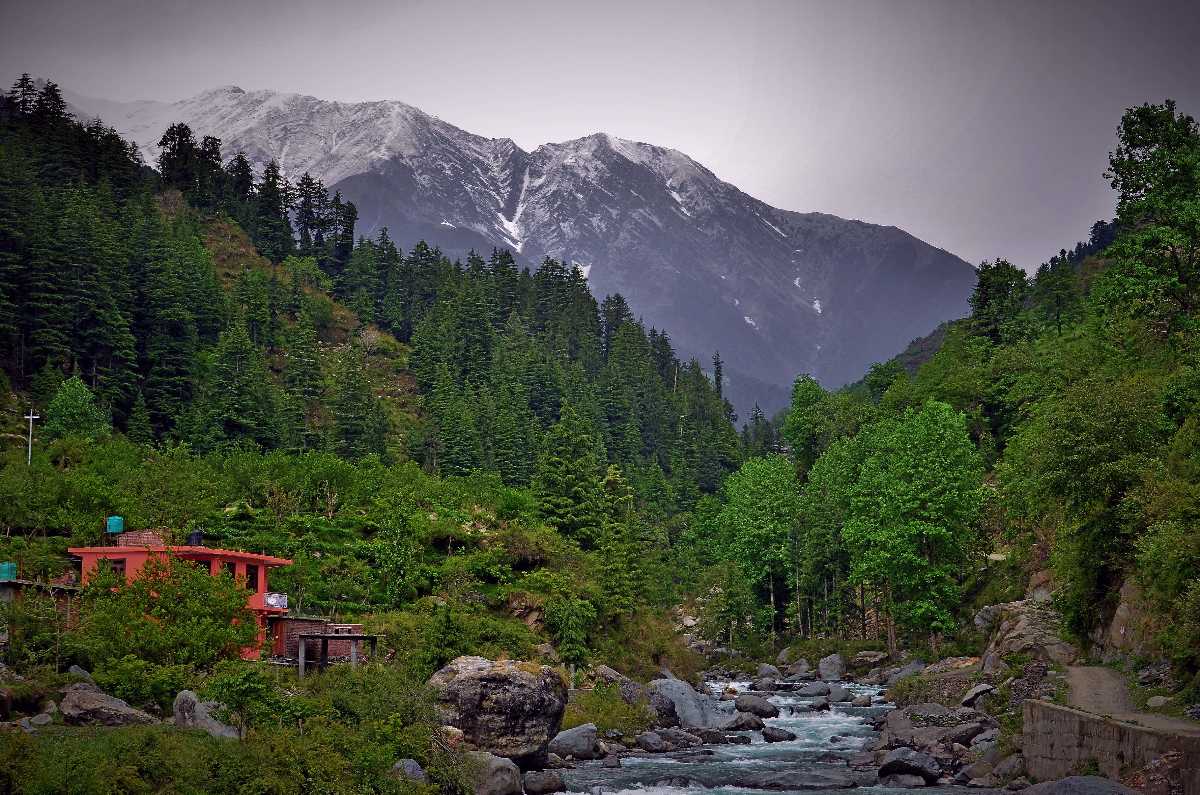
The remains of the summer palace of the former rulers of Mandi are located here. Through the little village of Tikkan, the road carries on to Barot. The town has a range of outdoor activities, including a trout breeding centre from where fish are released into the Uhl. A 30 km section of the river is used for angling. Barot also forms the gateway to the Nargu Wildlife Sanctuary which lies across the Uhl. The sanctuary is home to the monal, black bear and ghoral. Within it are forest rest house s at Thaltuckhod and Silbandhwari.
Darcha - Village of Bhaga River
Darcha is a village on the Bhaga River in Lahaul region in Lahaul and Spiti district in the Indian state of Himachal Pradesh. It is the northernmost permanent settlement in Himachal Pradesh along the Manali-Leh Highway. The Rough Guide to India describes it as "a lonely cluster of dry-stone huts and dingy tent camps".
The village has 65 households and a total population of 298, of which 152 are male and 146 are female. There are 2 residents belonging to scheduled castes and 222 belonging to scheduled tribes. Schooling up to 10+2 is available in the village; there is a Primary Health Centre at Darcha. Drinking water is available, and the village has power and telephone connections. Some buses between Manali and Leh stop for the night at Darcha where travelers sleep in tents. The village is the end-point of a popular trek beginning in Padum, Zanskar. Roadside stalls offer basic food. All passing vehicles must stop at Darcha's police checkpoint for passport checks.
Reckong Peo - Base of Peo Community
Reckong Peo, also spelled Rekong Peo and simply known as Peo by the local inhabitants, is headquarters of Kinnaur district, one of the twelve administrative districts of the Indian state of Himachal Pradesh. At a height of 2,290 metres, Reckong Peo is 260 kilometres from Shimla and seven kilometres from Powari. Earlier Kalpa was the headquarters later changed to Reckong Peo, named after group of people who used to own this place in ancient times.

Baijnath - Ancient Temple of Lord Shiva
Baijnath is a town in Kangra district of Himachal Pradesh. It is about 50 kilometres from Dharamshala which is the district headquarters. The ancient temple of Lord Shiva is situated here giving the town its name.
Parwanoo - Biggest Wholesale Market in Himachal
Parwānoo or Parwanu is a municipal council in Solan district in the Indian state of Himachal Pradesh. It is an industrial town. It has himachal's biggest wholesale market. It borders Panchkula district of Haryana, and is after the towns of Pinjore and Kalka on the Chandigarh Simla Highway. In fact it is separated by a river bed from the town of Kalka. Pinjore to Parwanoo is almost a continuous urban belt. From Pinjore there is also a road to Baddi. Another nearby industrial town of Himachal.
Rampur Bushahr - Town in Shimla
Rampur Bushahr is a town and a municipal council in Shimla district in the Indian state of Himachal Pradesh. It is 130 km from Shimla and is well connected with National Highway 5 which passes through Narkanda.

Barog - Hill Station in Solan
Barog is a hill station in Solan district in the Indian state of Himachal Pradesh. The station lies on UNESCO World Heritage Site Kalka–Shimla Railway. Set in the mountains Barog is just 60 km from Chandigarh on the Kalka-Shimla highway.
Bashisht - Residence to Vashisht Clan
Vashisht is a village in Kullu district, Himachal Pradesh, India. It is a popular tourist place. Founded by Guru Vashisht who was sole guru and teacher of Ram and Laxman. The village was once the home residence of the Vashisht clan. Ruled by the direct ancestors of Guru Vashisht until 1534, when under Akbar, the Mughal army seized the temple and small palace of Vashisht village and the neighbouring villages which were under the rule of Guru Ram Chandra Vashisht. The family of the ruler and the remaining Vashisht clan were exiled to Punjab under Akbar's rule.

Shri Chandra Vashisht son of then Ruler Ram Chandra Vashisht was one of the prominent Hindu gurus in Akbar's court and the family was kept on heavy pension until Jahangir abolished the Vashisht clan hierarchy and stopped the pension but still rewarded them with land in unknown villages of Haryana and Himachal Pradesh. Shri Chandra Vashisht died in 1572 serving under the Mughal court in Delhi.
Banjar - Valley of God
Banjar is a town in Kullu district in the state of Himachal Pradesh, India. Banjar is also known as the 'Valley of God'. The Tirthan valley is also located in Banjar. Tirthan river is major river of banjar. Therefore banjar is called tirthan valley. Banjar is one the tehsil of kullu district. 'Banjar mela ' is prominent fair of banjar valley.







